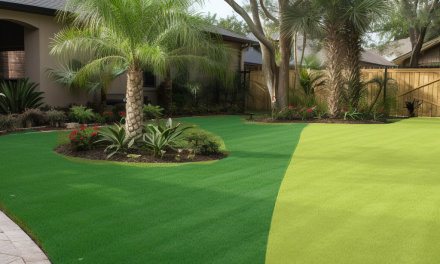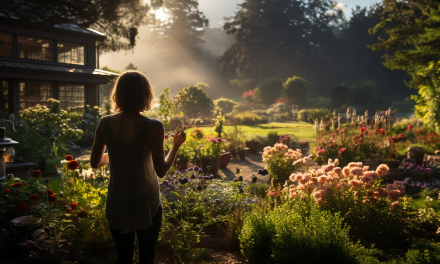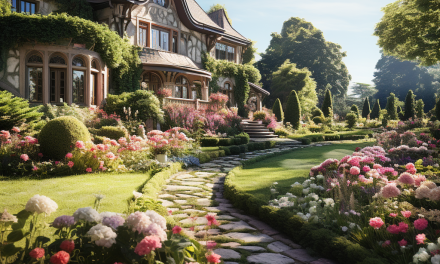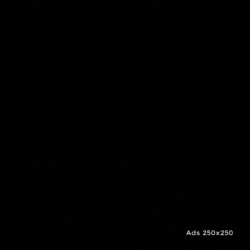Introducing the Controversial Topic of Landscape Fabric
Hello, my lovely garden whisperers! 🌿 It’s Gayle, and I’m here to delve into a subject that’s been a hot topic among gardeners, new and seasoned alike. We’re going to talk about landscape fabric, also known as weed barrier cloth. It’s one of those things that’s sort of like cilantro—you either love it or you absolutely can’t stand it.
Now, the idea behind landscape fabric is pretty straightforward. You lay it on your soil, cover it with mulch, and voila! No more weeds, right? But the reality isn’t that simple, my friends. This seemingly miraculous weed stopper has supporters and skeptics in almost equal measure.
On one end, we have professional landscapers and newbie gardeners singing its praises. “It keeps the weeds away,” they say. And indeed, when freshly laid, your garden will look like a picture from a magazine. 🌸
On the other hand, there are experienced gardeners who have been through the highs and lows with landscape fabric. They’ll tell you it’s not the magic solution it’s often advertised to be. In fact, some downright loathe it!
So, which group is right? Should you use landscape fabric in your garden? Well, I’ve done the digging (pun intended!) so you don’t have to. 💚
Get ready, my green-thumbed friends, as we unravel the truth behind landscape fabric—the good, the bad, and the just plain ugly. Buckle up for a journey through weed-free promises and discover if this fabric should have a place in your cherished garden space.
Landscape Fabric: The Promised Land of a Weed-Free Garden?
Hey, you fabulous green souls! Let’s get into the nitty-gritty about what landscape fabric promises versus what it actually delivers. 🌺
The Claims
Landscape fabric is often advertised with eye-catching slogans like “20-Year Weed-Free Guarantee!” That’s a heck of a promise, isn’t it? If you believe the label, you’d think it’s the answer to all your weed problems for the next two decades. But as they say, the devil is in the details—or in this case, the fine print.
Fine Print Alert 🚨: Upon closer inspection, you’ll find that these guarantees aren’t exactly what they seem. Phrases like “help control weeds” are more common, and that’s a far cry from a “weed-free” paradise. A little sneaky, if you ask me.
Reality Check: Weed Barrier Limitations
Pre-existing Weeds: Sure, seeds already in the soil may not break through the fabric. However, perennial weeds are stubborn and can find a way around it—literally, they’ll grow around the edges or any slits you’ve made.
New Weeds on the Block: Even with fabric, new weed seeds will find their way to your garden, carried by wind or birds. They’ll happily settle on the mulch above the fabric, find the organic material they need, and say, “Hey, let’s grow right here!”
The Mulch Conundrum: Mulch, often used to cover the fabric, decomposes over time. This turns into a breeding ground for—you guessed it—new weeds.
Water Woes: 🌧️ This is a big one, darlings. Landscape fabric isn’t the best at letting water through. As a result, your plants might struggle to get the hydration they need.
Now, I’m not saying it’s all bad. Landscape fabric has its advocates for a reason. In some situations, it can give you a good head start against weeds. However, it’s crucial to weigh these pros against the long-term cons.
So, that’s the real deal about landscape fabric’s weed-controlling abilities—or should I say limitations? 🌱💔
What do you think so far? Do you see landscape fabric in a new light? Next up, we’ll tackle another big issue with this controversial garden accessory: water problems. Stay rooted; you won’t want to miss it! 💦🌿
The Thirst is Real: Watering Woes with Landscape Fabric
Hello again, my lovelies! 🌻 Let’s delve into another crucial topic when it comes to landscape fabric: water, or rather, the lack thereof. Hydration is essential in the garden, and we’re going to see how landscape fabric might be leaving your plants parched. 💧
Water Runoff: A Slippery Issue
First off, let’s talk about how water interacts with this fabric. Most types of landscape fabric are essentially plastic sheets with teeny-tiny holes. Sounds good, right? Well, not exactly. When it rains, or when you give your garden that much-needed soak, the water tends to run off the fabric rather than seep through to the soil below.
Dry Spell for Plants 😢
Picture this: You’ve got this protective layer of fabric, and your darling plants are sitting on top. They’re waving their leafy arms saying, “Water, please!” Yet, because of the fabric’s design, the soil beneath stays arid, leaving your plants thirsty and stressed. That’s not a situation any caring gardener would want, right?
Reduced Air Exchange
Okay, you might be thinking, “What’s air got to do with it?” Turns out, a lot! The same barrier that hampers water penetration also restricts airflow to the soil. While this might not be as crucial as the water issue, it’s another downside to consider. A lack of air exchange can disturb the soil’s natural ecosystem, making it less inviting for beneficial insects and earthworms. 🐛
Alternate Approaches to Hydration
Now, don’t get disheartened. If you’re looking for alternatives, mulches like wood chips or straw can offer both moisture retention and weed suppression without the issues associated with landscape fabric. These natural mulches gradually decompose, enriching your soil rather than depriving it.
So, there you have it—a whole new perspective on the water issues related to landscape fabric. Before you make it a permanent resident in your garden, weigh these considerations carefully. And if you’re all about the moisture (like me!), you might think twice about using it. 💦🌿
The Dark Side of Landscape Fabric: Why Seasoned Gardeners Give It a Thumbs Down 👎
You might be wondering, “If it’s on the market, someone must be finding it useful, right?” Well, not everyone shares that sentiment, especially gardeners who’ve been around the block a few times.
The Story of Three Groups of People 🌳🌱🌼
In my time sharing garden tips and tricks with you all, I’ve noticed three distinct groups when it comes to opinions on landscape fabric.
The Landscapers: These folks adore landscape fabric because, let’s be honest, it makes their job easier—at least, in the short term.
The Newbies: Ah, the new gardeners. Still in their honeymoon phase with landscape fabric, they love it mainly because they haven’t yet seen the long-term repercussions.
The Old Souls: These are gardeners who’ve been in the game for years, sometimes inheriting gardens from previous owners who used the fabric. They’ve seen the aftermath and, let’s just say, they’re not fans.
The Pull-Out Game: A Gardener’s Nightmare 😱
So, you’ve had landscape fabric in your garden for a few years. Your trees and shrubs have grown, and suddenly, you’re faced with a problem: getting the fabric out. The roots have grown through the fabric, gripping it tightly. It becomes a Herculean task to remove it without causing substantial damage to your plants.
Forever is Not So Sweet 🌹
Landscape fabric is made from plastic, and it’s designed to last. While that sounds wonderful, it’s not exactly a boon for your garden. Why? Because it means that at some point, you will need to remove it, and when you do, it’s going to be a monumental task.
Say Goodbye to Soil Quality 👋
Remember how we talked about the wonderful benefits of decomposing mulch earlier? When you use landscape fabric, you’re essentially sealing off your soil, preventing any organic matter from enriching it. In the long run, this leads to depleted soil that’s less fertile and vibrant.
More Plastic, More Problems 🌍
Finally, let’s not forget the environmental aspect. The more plastic we use, the more we contribute to the ever-growing problem of plastic waste. And do we really need more of that in our gardens?
So, my wise and caring garden pals, that’s why many seasoned gardeners have a bone to pick with landscape fabric. It might look like an easy solution at first, but it could end up being a thorn in your side down the line. 🌹
Coming up, let’s talk about the few instances where landscape fabric could be your friend. It’s all about balance, isn’t it? 🌈
The Silver Lining: When is Landscape Fabric Actually Useful? ☀️
Alright, let’s put our balanced gardener hats on for a moment. I know I’ve been quite critical of landscape fabric, but fairness demands we talk about the few situations where it can actually serve a purpose. After all, even the darkest clouds have a silver lining!
Nurseries and Commercial Settings 🌱
In large nurseries or commercial plant growing setups, landscape fabric is sometimes used in walking areas to suppress weeds. It’s typically not covered with mulch or soil, so the issue of weeds growing on top of decomposing organic matter is minimized. If it gets dirty, it’s simply cleaned off.
Creating Temporary Pathways 🛤️
If you’re setting up a temporary garden pathway and don’t want to invest in paving stones or gravel just yet, laying down some landscape fabric can keep the weeds at bay. Just remember: keep it temporary and avoid covering it with mulch.
Underneath Gravel or Artificial Turf 🌿
When you’re using inorganic mulch like gravel or setting up an artificial turf area, landscape fabric can serve as an effective barrier between the ground and the covering material. In these scenarios, the fabric is less likely to become a weed bed over time.
Short-Term Weed Control for New Beds 🌸
Planning to convert a weedy area into a new garden bed? A temporary layer of landscape fabric can help kill off the existing weeds by blocking sunlight, making it easier for you to prepare the area for planting.
A Word of Caution ⚠️
Even in these “ideal” scenarios, be mindful of the fabric’s impact on soil health, water drainage, and the environment. If you’re going to use landscape fabric, opt for products made from biodegradable materials. This lessens your environmental impact and makes eventual removal easier.
Also, always read the fine print. Many landscape fabrics offer ‘guarantees’ that might not be as solid as they seem. As the saying goes, “If it’s too good to be true, it probably is.”
Conclusion 🌻
So there you have it, folks—the good, the bad, and the ugly of landscape fabric. Like many things in life and gardening, it has its pros and cons. The key is to understand your specific needs and conditions to make an informed choice.
Up next, we’ll look into alternative solutions for weed control that are eco-friendly and garden-safe. Stay tuned and keep those thumbs green! 🌱
The Greener Alternatives: Eco-Friendly and Effective Weed Control 🌱🌿
Now that we’ve uncovered the good, the bad, and the nitty-gritty of landscape fabric, let’s turn our attention to some greener pastures. The beauty of gardening lies in its possibilities, so let’s explore some eco-friendly, garden-loving alternatives for weed control that don’t require plastic barriers.
Organic Mulches: A Garden’s Best Friend 🌳🍂
First off, organic mulches like straw, wood chips, or compost not only help control weeds but also enrich your soil over time. They’re breathable, allowing water and nutrients to reach your plants’ roots.
Ground Covers: Nature’s Carpet 🍀
Another fabulous option is to use ground-covering plants. These low-growing plants form a dense mat, making it hard for weeds to compete. Plants like creeping thyme, clover, and even ornamental grasses work great in this role.
Hand-Pulling: The Classic Approach 👩🌾
Don’t underestimate the effectiveness of good ol’ hand-pulling! While it’s labor-intensive, removing weeds manually as they appear can be a satisfying and chemical-free way to maintain your garden.
Boiling Water: Quick and Easy ☕
A kettle of boiling water can be a non-toxic and quick way to get rid of weeds growing in the cracks of your driveway or walkways. Just be careful not to spill it on your beloved plants!
Vinegar Sprays: Acidic but Effective 🍋
For spot treatments, a vinegar-based spray can work wonders. However, make sure to apply it only to the weeds, as vinegar is non-selective and can harm your desired plants.
The Takeaway 💡
So there you have it! A host of greener alternatives that not only help you control weeds but also contribute to the overall well-being of your garden and the environment. Your plants will thank you, and so will Mother Earth! 🌍💚
That wraps up our deep dive into the world of weed control. With so many options to choose from, you can find the perfect solution that resonates with your garden’s needs and your own gardening philosophy. Till our next green adventure! 🌷🌼
Amazon and the Amazon logo are trademarks of Amazon.com, Inc, or its affiliates.AMAZON AFFILIATE DISCLOSURE The Garden Whisperer Tips blog is a participant in the Amazon Services LLC Associates Program, an affiliate advertising program designed to provide a means for sites to earn advertising fees by advertising and linking to Amazon.com. As an Amazon Associate, we earn from qualifying purchases. Some of the links on this blog are affiliate links, and if you go through them to make a purchase, we will earn a commission at no extra cost to you. AFFILIATE MARKETING AND ADVERTISEMENT TRANSPARENCY At Garden Whisperer Tips, we believe in full transparency with our readers. We participate in multiple affiliate marketing programs, and some of the links on this blog may be affiliate links. This means we may earn a commission if you click on the link or make a purchase using the link. We also host advertisements on our blog, which helps us generate revenue. Rest assured, our editorial content is not influenced by advertisers or affiliate partnerships.





